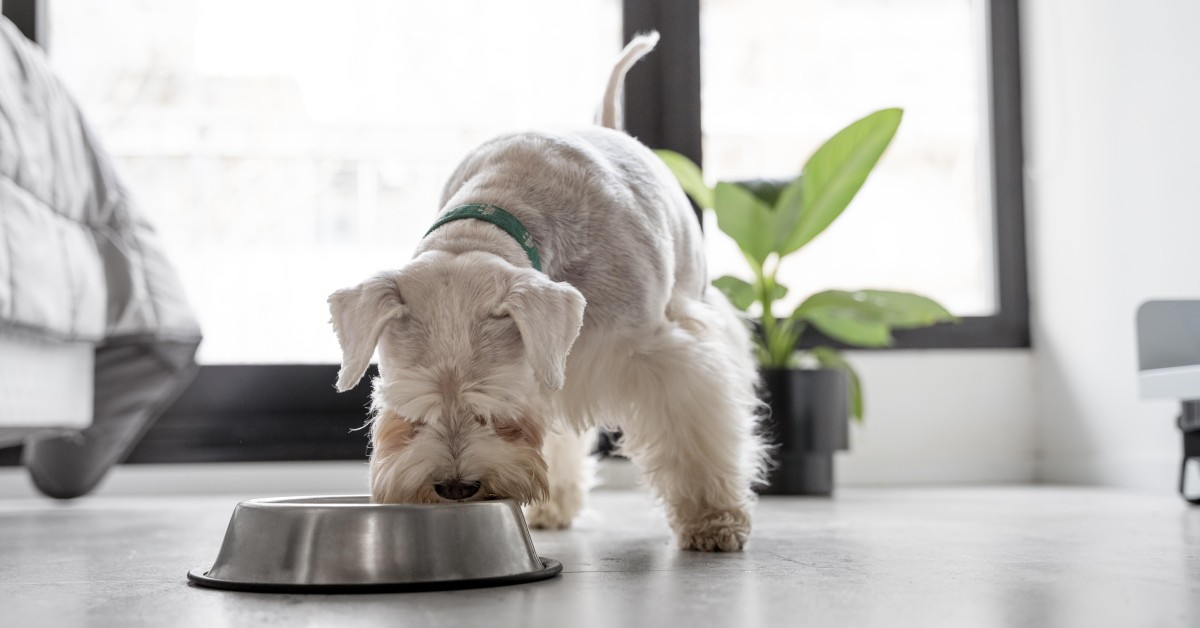Switch Up Your Dog’s Diet this Summer Season
Changing your dog’s diet in summer can keep your pet healthy and active throughout the season.

Summer doesn’t just mean more walks and games of fetch. Higher temperatures, more activity, and potential travel can affect a dog’s appetite, with many canines choosing to eat more or less based on changing energy demands. To ensure that your pet is getting the nutrition he needs for good health, consider switching up your dog’s diet this summer.
How Do Dogs’ Nutritional Needs Change in the Summer?
While each canine is unique, many pet owners notice subtle changes in the way that their dog eats from season to season. Like humans, many dogs tend to take in more calories in the winter. According to the Canine Health Foundation, the caloric need for dogs increases an average of 7 to 7.5 percent for every 10-degree drop in temperature. These extra calories help pets generate heat to keep warm in winter.
However, there are circumstances in which a pet may require more calories in the summer than in winter, such as when pets are involved in high-intensity sports or physical competitions. The more active your dog is, whether you’re going on long hikes or participating in agility competitions, the more food your pet will need to stay healthy and recover more easily.
The exception to these dietary changes is dogs under the supervision of veterinary professionals. Some pets have chronic health conditions, such as arthritis, allergies, or obesity, which may require a strict diet that shouldn’t be altered without the guidance of a veterinarian. Be sure to consult with your vet if you’re unsure about what to feed your dog and how much to feed him based on his age, lifestyle, and dietary requirements.
How to Safely Change Your Dog’s Diet to Avoid Side Effects
Shifting to a summer diet shouldn’t be done overnight. Changing your pet’s food too fast could lead to unwanted side effects, such as gastrointestinal distress. Instead, you’ll want to follow some simple tips to transition your pet to its new diet in the proper way.
1. Make a Slow Transition
Start by incorporating small amounts of summer foods into your dog’s existing winter diet. Over the course of a week, slowly increase the amount of summer dog food and decrease the amount of winter dog food until you’re only giving your pet their new diet. During this transition period, pay close attention to your dog’s health. If you see signs of digestive distress, such as vomiting, diarrhea, or changes in appetite, further slow down the transition or talk to your vet about the next steps to take.
2. Create a Strategic Dog Feeding Schedule
When it comes to feeding your dog, timing is everything. Dogs can suffer stress and other side effects when meal times come late or not at all. As you change your pet’s diet this summer, remember to keep a strict schedule, feeding your pet at the same times each day. Ideally, meal times should be avoided during the hottest hours of the day to promote better digestion. Also, avoid feeding your dog directly after walks or play sessions, as this could lead to an upset stomach.
3. Be Wary of Dog Food Allergies
If your dog’s summer diet consists of new foods, you’ll want to be cautious of potential dog food allergies or food intolerances. Adverse food reactions may present with cutaneous symptoms, gastrointestinal side effects, or a combination of both. If you suspect that your dog may have a food allergy after introducing a new food, discontinue it to see if the side effects clear up. If the reaction is severe or if symptoms don’t subside, consult with your vet.
4. Give Your Dog More than Water
While you should provide your dog with a continuous supply of fresh, cool water during the summer, there are other ways to keep your pet hydrated when temperatures start to soar. Supplement your canine’s water intake with other sources of hydration, such as wet dog food, which has a higher water content than dry kibble. Alternatively, you can pour some bone broth onto your pet’s dry food for added moisture. Certain foods, such as watermelon and cucumber, can also be a refreshing, high-water content snack.
5. Recognize Signs of Diet Issues in Your Dog
Not sure if your pet should remain on its current diet or if a switch is needed? There are several signs that could indicate that it’s time to change your pet’s diet, including:
- They’ve gained or lost too much weight.
- They have dry, itchy skin or a rash (i.e. a sign of food allergies)
- Their exercise routine has changed.
- They’re showing signs of gastrointestinal upset.
- They’re getting older.
- Their nutritional needs have changed due to an illness or injury.
Changing Your Dog’s Diet for Summer
The start of summer is a great time to review your pet’s diet. A new season often means new activities, more time spent outdoors, and perhaps traveling with your pet in tow. Providing your pet with plenty of nutritious, hydrating food can help ensure that they remain healthy and active whatever you decide to do this summer season.
Ready to start saving money on pet wellness care?
Then take a look at Mint Wellness, the pet wellness plan that provides fast reimbursement on routine pet care. Save on vaccinations, wellness exams, preventatives, dental, and more!
Learn More


